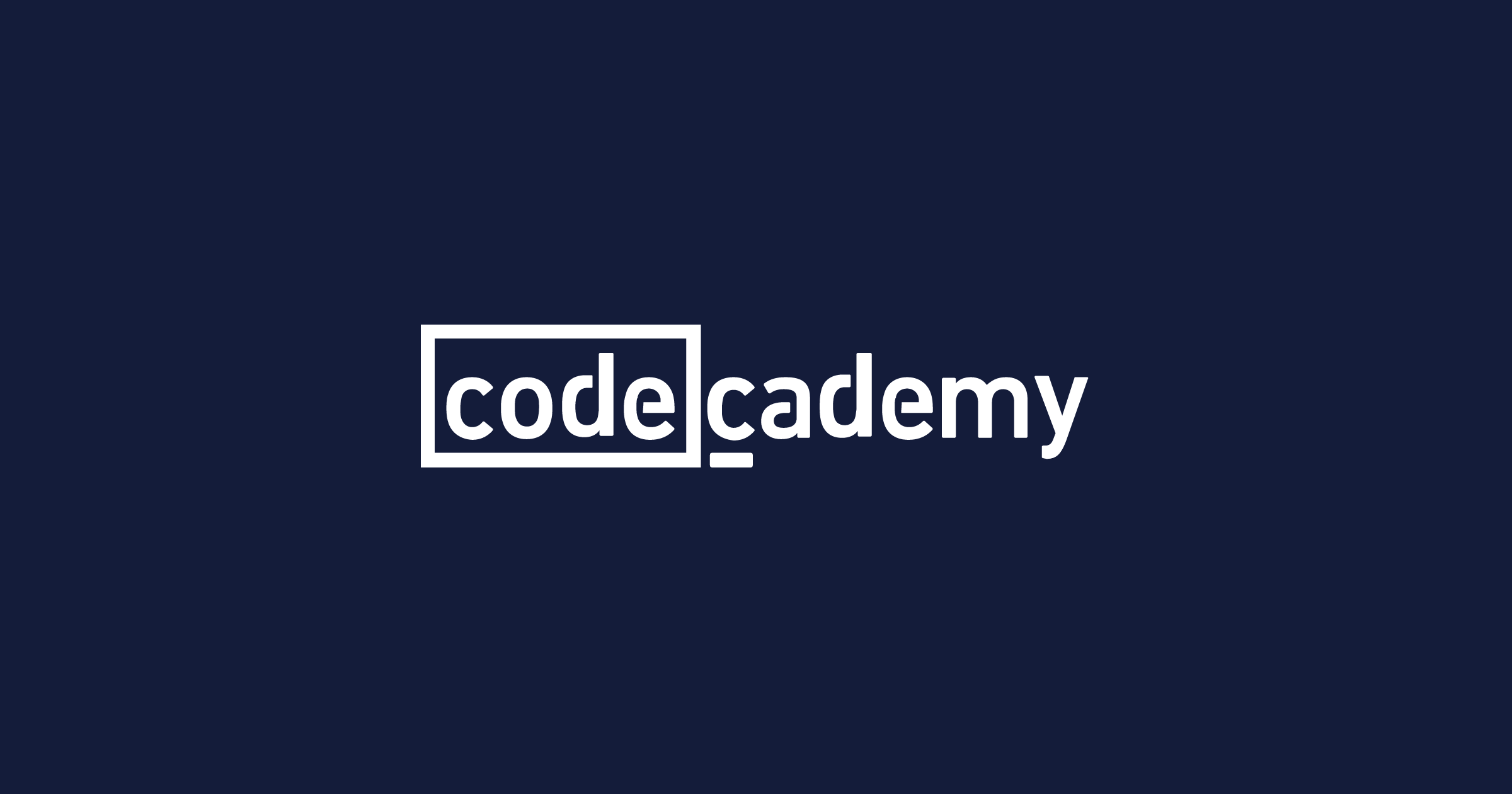Introduction
Online and digital learning have grown dramatically over the past few years driven by the pandemic. Both individuals and organizations are increasingly leveraging online platforms to upskill and reskill their workforce. In this article, we evaluate 15 of the most popular and highly rated digital learning platforms to help you find the right solution for your needs.
Methods of Evaluation
To evaluate and rank the top platforms, we considered several factors – quality and variety of course content, learner engagement features, credentials offered, pricing models, platform stability and features, instructor quality, and other qualitative measures. We also factored in quantitative metrics like number of backlinks, traffic and keyword search trends to understand audience demand. Our rigorous review process and blended qualitative-quantitative approach aims to provide an unbiased analysis of each platform.
1. LinkedIn Learning
LinkedIn Learning, formerly known as Lynda.com, is one of the largest online learning platforms for professional and business skills. It was acquired by LinkedIn in 2015 and offers access to its large library of online video courses taught by industry experts.
Pros: Some key advantages of LinkedIn Learning include:
– Industry standard platform for developing professional and business skills
– Large catalog of courses tailored for careers in business, technology and creative fields
– Videos taught by renowned subject experts and professionals in their fields
– Courses can be accessed on any device including desktop, mobile and tablets
Cons: One potential disadvantage is the pricing, which can be expensive for individual users or small teams on monthly/annual subscriptions compared to other lower-cost alternatives.
Pricing: LinkedIn Learning offers a few different pricing plans including:
– Individual subscriptions starting at $29.99/month or $349 annually
– Team subscriptions starting at $24.99/user/month billed annually for 5+ users
– Educational institutions can purchase annual campus-wide access
Some key stats about LinkedIn Learning include:
– Over 16,000 online video courses available
– Courses taught by more than 2,000 expert instructors
– Over 930 million members in the LinkedIn professional network
– Used by individuals, businesses and academic institutions globally for skills development
2. Adobe Captivate
Adobe Captivate is a feature-rich eLearning development tool from Adobe that allows users to create interactive courses, simulations, and other digital learning experiences. With over 20 years in the market, Captivate remains one of the most popular choices for digital learning professionals.
Pros: Key advantages of Adobe Captivate include:
– Feature-rich tool for developing interactive courses, simulations, assessments and more
– Wide format support allowing desktop and mobile delivery of courses
– Templates and stock images, videos, audio and other assets to help speed up authoring
Cons: The main disadvantage is the cost as Captivate requires an ongoing subscription versus a one-time purchase. However, for larger organizations the subscription model may be more cost effective in the long run.
Pricing: Adobe Captivate pricing starts at $40 per month for an individual subscription. Organizational site licenses are also available with per-seat pricing that decreases based on the number of seats purchased.
Some key stats about Adobe Captivate include:
– Used by over 500,000 digital learning professionals worldwide
– Supports all major desktop and mobile platforms for course delivery
– Comes with a large library of templates and assets to help speed up the authoring process
3. Harvard Online
Harvard Online is the digital learning platform from Harvard University, one of the most prestigious educational institutions in the world. Through Harvard Online, learners have access to renowned Harvard Extension School courses, Massive Open Online Courses (MOOCs), short programs and certificates across a wide range of subjects.
Pros: Some key advantages of Harvard Online include:
– Learn from world-class Harvard faculty and researchers
– Cover in-demand subjects across Business, Computer Science, Health, STEM and more
– Renowned Harvard University brand carries credibility for career advancement
– Flexible and self-paced online learning fits well with busy schedules
– Lifetime access to online course materials after completion
Cons: The main disadvantage is the cost. While MOOCs are usually free, certificate and degree programs range from a few hundred to over $10,000 depending on the program. Financial aid options are limited for most online programs compared to on-campus options.
Pricing: Pricing varies depending on the program:
– MOOCs are usually free to audit but certificates range from $50-100
– Undergraduate and graduate certificates start at $1,500 and go up to $6,000+
– Master’s degrees range from $10,000-20,000 per year
– Some individual online courses are $750-1,500 to enroll
Some key stats about Harvard Online include:
– Over 250 online courses and programs available
– Over 20 MOOCs developed in partnership with edX
– Over 2 million students have enrolled in MOOCs on edX
– Flexible self-paced learning model for most online courses and programs
– Programs can be taken entirely online or blended with on-campus courses
4. Stanford Online
Stanford Online, the virtual learning initiative of Stanford University, offers massive open online courses (MOOCs) through the online platform edX. Led by Stanford faculty, these interactive online courses provide education to learners worldwide on various topics from Science to Humanities. With cutting-edge research and renowned faculty, the online courses offered through Stanford Online aim to disseminate the university’s high-quality education offerings on a global scale.
Pros: The key advantages of taking online courses from Stanford Online include:
– Taught by eminent Stanford University faculty, some of the world’s leading experts in their fields
– Interactive online format allows flexibility of learning at one’s own pace
– Wide range of courses to choose from across different subjects
– Opportunity to gain skills and boost career prospects by studying from a top university remotely
Cons: One potential disadvantage could be lack of experience of interacting and networking with peers and faculty in person as in traditional campus-based courses. However, this is being addressed to some extent through online discussion forums in Stanford Online courses.
Pricing: The courses offered through Stanford Online are completely free and open to anyone around the world to enroll. However, for verified certificates of course completion, a small fee may be applicable depending on the course.
Some key stats about Stanford Online:
– Over 5 million learners have enrolled in Stanford Online courses since 2012
– Hosts over 80 courses across various subjects including computer science, business, engineering, psychology etc.
– Certificates are available upon successful completion of courses to recognize learners’ achievements
5. Coursera
Coursera is one of the largest online learning platforms in the world, providing access to over 4,000 high-quality online courses and degrees from top universities and organizations globally. It was launched in 2012 by Daphne Koller and Andrew Ng with a mission to provide universal access to education. Coursera partners closely with industry leaders like Google, Meta, IBM and top academic institutions like Yale, Stanford, Imperial College London and others to curate job-relevant courses for learners across the globe.
Pros: Some key advantages of Coursera include:
– Content from top universities and industry experts.
– Verified certificates and professional credentials.
– Flexible learning – courses can be accessed anytime, anywhere.
– Wide variety of courses across categories like business, tech, data science etc. suitable for all learning levels and interests.
– Financial aid available for courses and degrees based on need.
– Mobile app for on-the-go learning.
– Courses taught by the actual university professors.
Cons: One potential disadvantage could be the cost for paid content like professional certificates, specializations and degree programs which may not be affordable for all learners. However, Coursera does offer financial aid and most basic courses are available for free.
Pricing: Coursera offers a mixture of free and paid content:
– Basic courses are free to audit.
– Certificates, degrees and some specializations programs require a fee that can range from $29 – $399 per month depending on the program.
– Enterprise solutions also available for businesses and organizations.
Some key stats about Coursera include:
– Over 150 million learners from around the world.
– Over 200 university partners including top institutions like Stanford, Yale, Imperial College London etc.
– Over 4,000 online courses and degrees available across business, tech, data science and many more categories.
– Over 100 professional certificates and degree programs.
– Translates courses into multiple languages to improve accessibility.
6. Moodle
Moodle is an open-source learning platform designed to provide educators, administrators and learners with a single robust, secure and integrated system to create personalized learning environments. Founded in 2002, Moodle has grown exponentially over the last 20 years and is now one of the world’s most widely used open-source LMSs with hundreds of thousands of sites deployed in over 200 countries worldwide.
Pros: Some key advantages of Moodle include:
– Open source and highly customizable platform
– Large, active developer community continuously contributing new features
– Affordable pricing model for schools, businesses and other organizations
– Robust features for content creation, collaboration and assessments
Cons: A potential disadvantage of Moodle is that, as open source software, it does not provide the same commercial support and services that paid platforms offer. However, this drawback is offset by the strong, global Moodle community.
Pricing: Moodle is available freely as open source software. Hosting and support services may be purchased from various third-party Moodle partners and service providers starting at around $5-10 per user per year.
Some key stats about Moodle include:
– Used by over 200,000 sites worldwide
– Supports over 140 languages
– Has over 100,000 registered sites globally
– Serves over 150 million users
7. Khan Academy
Khan Academy is a free online learning platform and nonprofit organization with the mission of providing a world-class education for anyone, anywhere. It offers practice exercises, instructional videos, and personalized learning tools for students in grades K-12 covering subjects such as math, science, computing, history, art history, economics, and more.
Pros: Key advantages of Khan Academy include:
– Non-profit platform focused on providing free education resources globally
– Mastery-based learning approach with adaptive practice activities and assessments
– Learn at your own pace with instructional videos and exercises tailored to individual skills
Cons: As a free platform, it relies on donations to continue developing new resources. There may be fewer interactive learning tools compared to paid platforms.
Pricing: Khan Academy offers all its learning resources completely free of cost. It relies on donations from philanthropic organizations, corporations, and individuals to continue operating and developing new content.
Some key stats about Khan Academy include:
– Over 100 million registered users worldwide
– Available in over 40 languages
– Provides free learning resources covering major K-12 subjects and exams
8. openSAP
openSAP is SAP’s strategic education program that provides free online courses focusing on SAP technologies and solutions. The courses are led by SAP experts and delivered in a self-paced online format, allowing learners to build skills relevant to SAP solutions from anywhere and at any time.
Pros: Some of the key advantages of openSAP include: – Free courses focusing on in-demand SAP technologies and solutions – Courses are taught by SAP professionals providing insider expertise and knowledge – Flexible self-paced online format allows learners to study on their own schedule from anywhere – Valuable for career changers looking to build SAP-relevant skills or for those seeking new opportunities within SAP
Cons: The main disadvantage is that the courses are introductory in nature and do not provide formal SAP certifications upon completion. Learners would need to explore other options like SAP-authorized training partners if wanting to pursue advanced certifications.
Pricing: All openSAP courses are completely free to enroll in and access. There are no charges or fees associated with taking part in their online educational program.
Some key facts about openSAP include: – Over 200 free courses available covering topics from SAP software to leadership and soft skills – Courses are available in multiple languages including English, Spanish, Portuguese, and German – Thousands of learners from over 180 countries have enrolled in openSAP courses since its launch in 2014
9. edX
edX is a massive open online course (MOOC) provider founded by Harvard and MIT. It offers online courses, microdegrees, and full degrees to learners around the world. With over 24 million learners, edX offers thousands of free and paid online courses from top institutions like Harvard, MIT, Berkeley, and more.
Pros: Some of the key advantages of edX include:
– Large catalog of free online courses from highly-ranked schools
– Flexible self-paced learning
– Credentials like MicroMasters and OMSCS programs for career advancement
– Non-profit platform with a mission of expanding access to education
Cons: One potential downside of edX is that since most courses are self-paced, it may lack the structure and deadlines of a formal university program.
Pricing: Most edX courses are completely free to audit. For verified certificates with proctored exams, pricing varies but is generally between $50-500. Full degree programs through partner universities range from $10,000-100,000 depending on the program and school.
Some key facts about edX include:
– Founded in 2012 by Harvard and MIT to offer open online courses for anyone to take
– Serves over 24 million learners worldwide
– Offers over 3,000 online courses in subjects like computer science, data science, business, health, and more
– Partners with over 140 top universities and companies globally
10. Codecademy
Codecademy is one of the most popular online platforms for learning coding and technology skills. Founded in 2011, Codecademy offers hands-on interactive coding lessons and courses covering a wide range of programming languages and technologies.
Pros: Some key advantages of Codecademy include its focus on hands-on interactive coding exercises, beginner-friendly courses across many languages and technologies, and popularity as a platform to learn programming and tech skills from the basics.
Cons: While Codecademy has a lot of free content, some courses require a Pro subscription. The lessons can feel quite basic or introductory for those with more advanced coding experience.
Pricing: Codecademy offers both free and premium paid subscription options. The basic courses are free to access, while a Pro membership unlocks access to advanced interactive projects and is priced at $19.99/month or $239.88/year (with occasional discounts).
Over 50 million people have used Codecademy to learn new skills. Codecademy offers beginner to intermediate level courses in popular coding languages like Python, JavaScript, HTML/CSS, and more. Lessons are project-focused and interactive to help users learn by doing.
11. FutureLearn
FutureLearn is an online learning platform developed by The Open University in the UK. It provides online courses and programs from top universities around the world including The Open University, Imperial College London, Copenhagen Business School, The Museum of London, and others. Since its launch in 2013, the platform has hosted over 8 million learners across more than 130 countries.
Pros: Some key advantages of FutureLearn include:
– Wide selection of free and paid courses from prestigious universities and organisations worldwide.
– Focus on engagement through forums, peer feedback, and interactive activities.
– Flexible self-paced learning with the option to download courses, audio, and visual content.
– Learners can track their progress and achievements through digital badges and statements of participation.
Cons: One potential disadvantage is that unlike some other MOOC providers, FutureLearn does not provide official academic credits or certificates for many of its free courses. Paid degree programs offer formal qualifications but come at a higher cost.
Pricing: FutureLearn offers most courses for free as part of its mission to make education accessible to all. However, some courses have a small fee for things like exams, certificates, or extended deadlines. Paid online degrees and programs are priced per year or per course and can range between £1,000-£3,000 per year depending on the program and university.
Some key stats about FutureLearn include:
– Over 190 universities and organisations partnered with FutureLearn to offer their courses.
– Over 2,000 online short courses and degrees available on a wide range of topics.
– Over 8 million learners from 130+ countries have signed up on FutureLearn.
12. Pluralsight
Pluralsight is an online learning platform that offers a comprehensive library of tech courses created by industry experts. With over 10,000 courses covering tech roles like coding, AI, cloud computing and more, Pluralsight helps individuals and businesses gain in-demand skills to excel in their careers. Since its launch in 2004, Pluralsight has grown to serve over 50,000 companies worldwide, including 85% of Fortune 500 firms.
Pros: Some of the main advantages of Pluralsight include:
– Courses led by industry experts and mentors from top companies
– Flexible learning with courses designed for all skill levels and roles
– Large course library with content always kept up-to-date
– Role-based learning paths to build skills for in-demand tech jobs
– Available through both individual subscriptions and corporate plans
Cons: One potential disadvantage is that the standard individual subscription plan is paid on a monthly or annual basis. This may not suit those seeking free or one-time payment models.
Pricing: Pluralsight offers the following pricing plans:
– Individual Plans starting at $29/month or $299/year
– Corporate/Team Plans starting at $299/user/year
Some key stats about Pluralsight include:
– Over 10,000 online courses available
– Used by 85% of Fortune 500 companies
– Taught by expert authors from top companies like Apple, Google, Microsoft etc.
– Courses cover domains like programming languages, IT operations, data science and more.
13. Treehouse
Treehouse is an online learning platform that provides interactive video courses for web design, coding, and business skills. Founded in 2010, Treehouse has become one of the leading digital skills learning platforms, with over 20 million learners worldwide.
Pros: Some of the key advantages of Treehouse include:
– Interactive video courses make learning engaging and fun
– Project based learning approach helps cement concepts through hands-on practice
– Affordable monthly subscription pricing model great for individuals and small teams
– Highly focussed on in-demand programming languages and design skills
Cons: One potential disadvantage is the lack of live online instructor support compared to in-person bootcamp programs. However, Treehouse attempts to address this through their large library of video content and supportive community forums.
Pricing: Treehouse offers affordable monthly plans starting from $25 per month for individuals. Organizations can also buy customized team plans for as low as $15 per user per month when billed annually.
Some key stats about Treehouse include:
– Over 1,000 interactive video courses on topics like web design, coding, mobile development, UX/UI design and more
– Taught by expert instructors with years of industry experience
– Used by over 20 million learners worldwide
– Offers project-based learning with challenges to apply knowledge
14. Alison
Alison is a free online learning platform that offers a variety of online courses in different subject areas. Founded in 2007, Alison aims to make quality online education accessible to learners worldwide for free. With over 6 million learners and counting, Alison offers self-paced online courses that can be accessed on any device.
Pros: Some key advantages of Alison include:
– Completely free to access with no payment required
– Wide range of topics and courses at different skill levels suited for learners of all ages and backgrounds
– Courses designed for self-paced learning with flexibility to learn at your own pace
– Gamified courses to make online learning more engaging and fun
– Certificates awarded upon successful completion of courses
Cons: One potential disadvantage of Alison could be the lack of direct interaction with instructors in a traditional classroom setting as the courses are self-paced and conducted fully online.
Pricing: Alison offers all of its online courses completely free of charge. Learners do not need to pay any subscription or course fees. Upon completion, learners are awarded eCertificates to verify their newly acquired skills and knowledge.
Some key stats about Alison include:
– Over 6 million registered learners from all over the world
– Offers over 230 free online courses covering topics such as business, IT, software development, personal development and more
– Courses developed by subject matter experts and available 24/7
– High learner engagement through gamified learning experience
– Mobile-friendly courses that can be accessed anytime, anywhere
15. SAP SuccessFactors Learning
SAP SuccessFactors Learning is the learning management system (LMS) offered by SAP SuccessFactors, a leading cloud-based human capital management (HCM) vendor. As part of SAP SuccessFactors’ broader HCM suite, Learning seamlessly integrates with other solutions like Employee Central for a unified employee experience.
Pros: Key advantages of SAP SuccessFactors Learning include:
– Seamless integration with the SAP SuccessFactors HCM suite for a unified employee experience
– Robust analytics and reporting capabilities to measure effectiveness of learning programs
– Customizable and flexible platform that can adapt to an organization’s needs
– Ability to easily create and deliver a variety of content like videos, documents and more
Cons: A potential disadvantage is the higher cost of ownership compared to other learning management systems due to additional capabilities within SAP SuccessFactors’ broader HCM platform.
Pricing: Pricing for SAP SuccessFactors Learning depends on the number of users and specific modules/functionality required. It is usually sold as part of SAP SuccessFactors’ broader HCM cloud subscription which starts at around $50 per user per month.
Some key stats about SAP SuccessFactors Learning include:
– Used by over 7,000 companies globally across various industries
– Over 150,000 courses available in their catalog
– Robust analytics and dashboards on the impact of learning initiatives
Conclusion
While all the platforms reviewed here are excellent in their own right, we hope this detailed evaluation provides you meaningful insights to choose the learning solution best aligned with your specific learning goals, budget and preferences. Online learning is a continually evolving space and platforms are enhancing their offerings regularly. We will continue tracking developments in this space to bring you the most updated reviews and recommendations going forward.
















